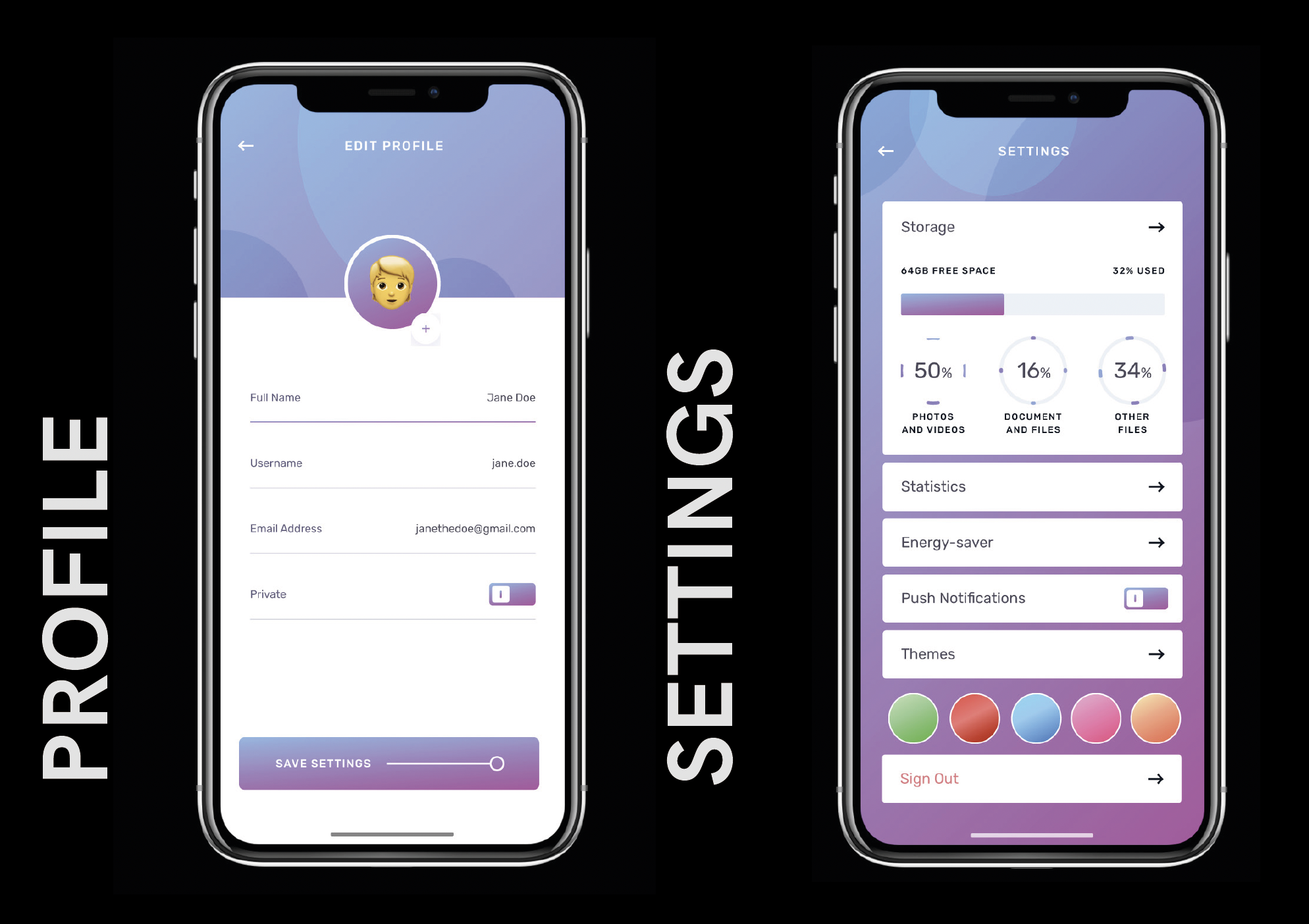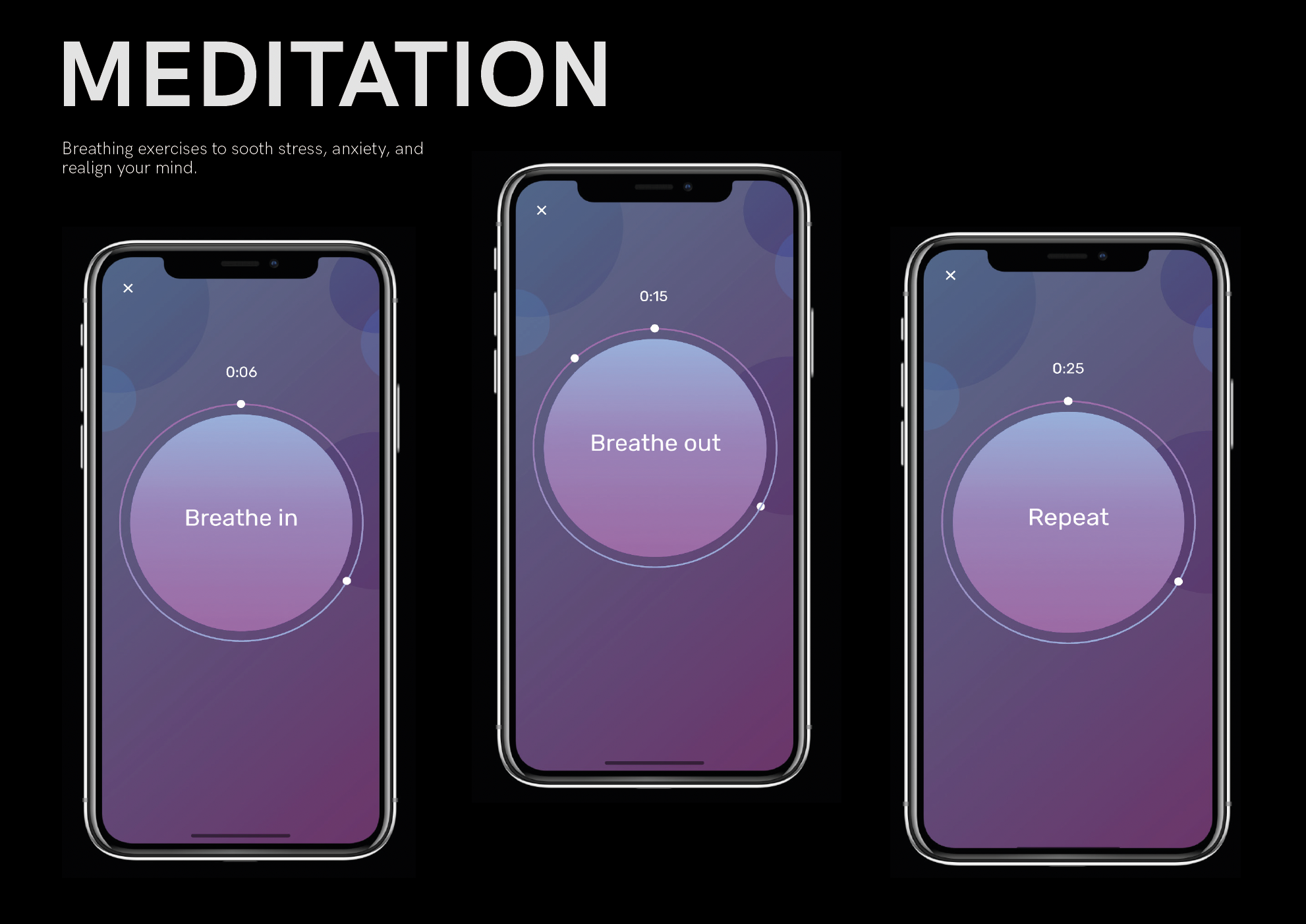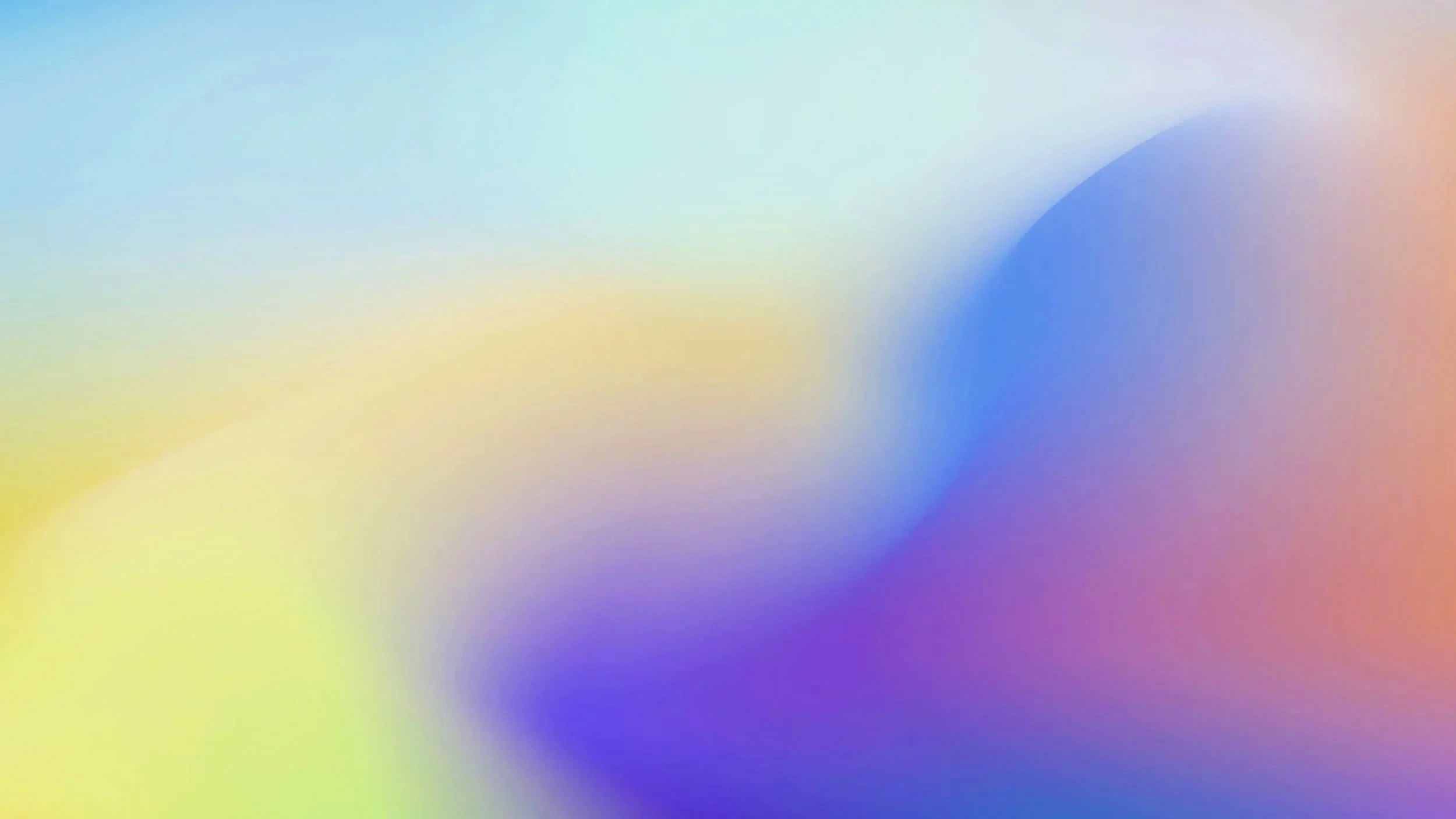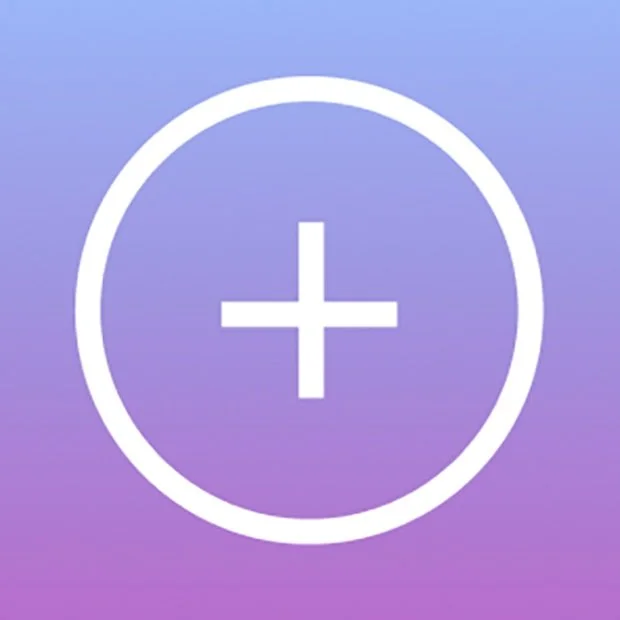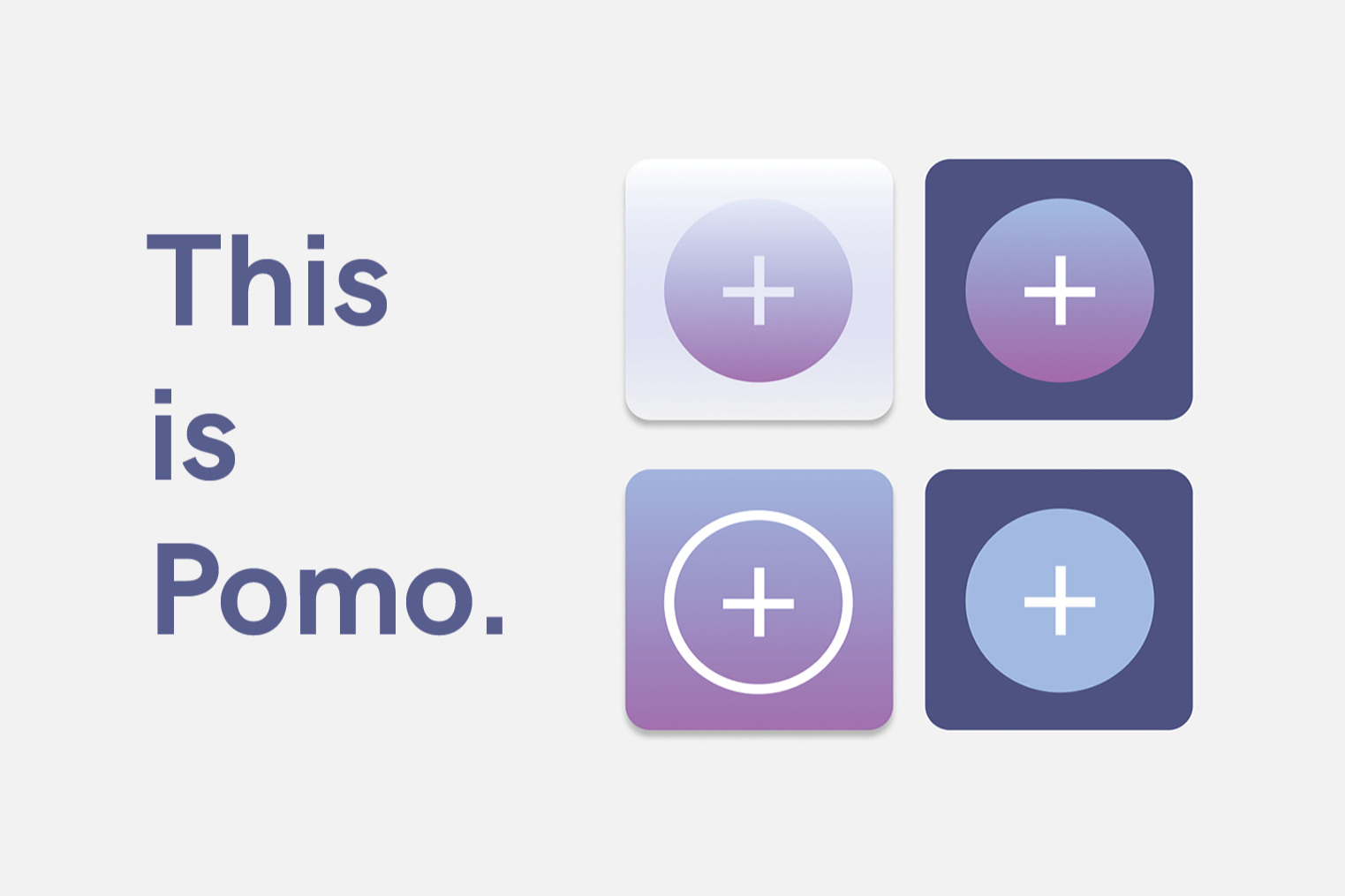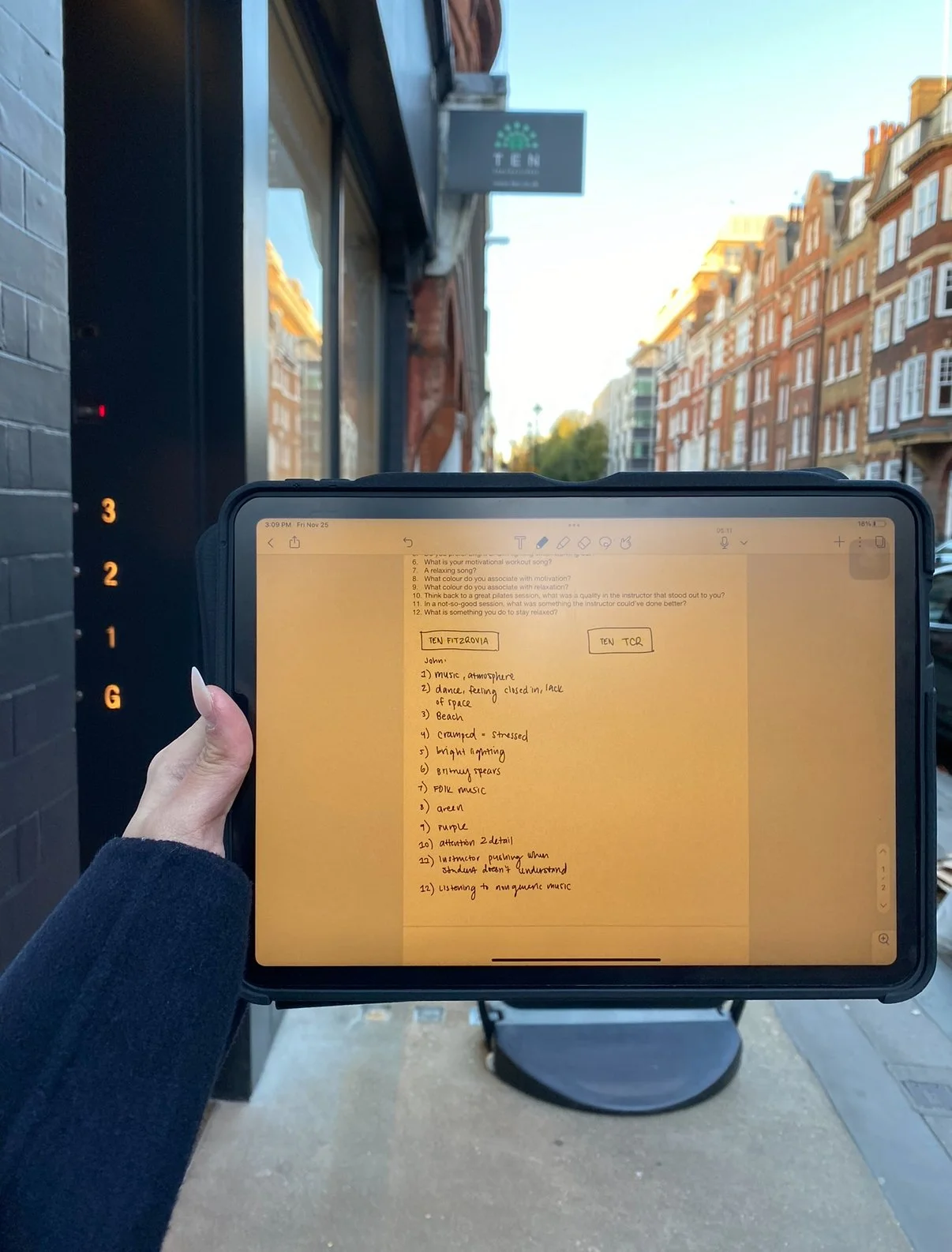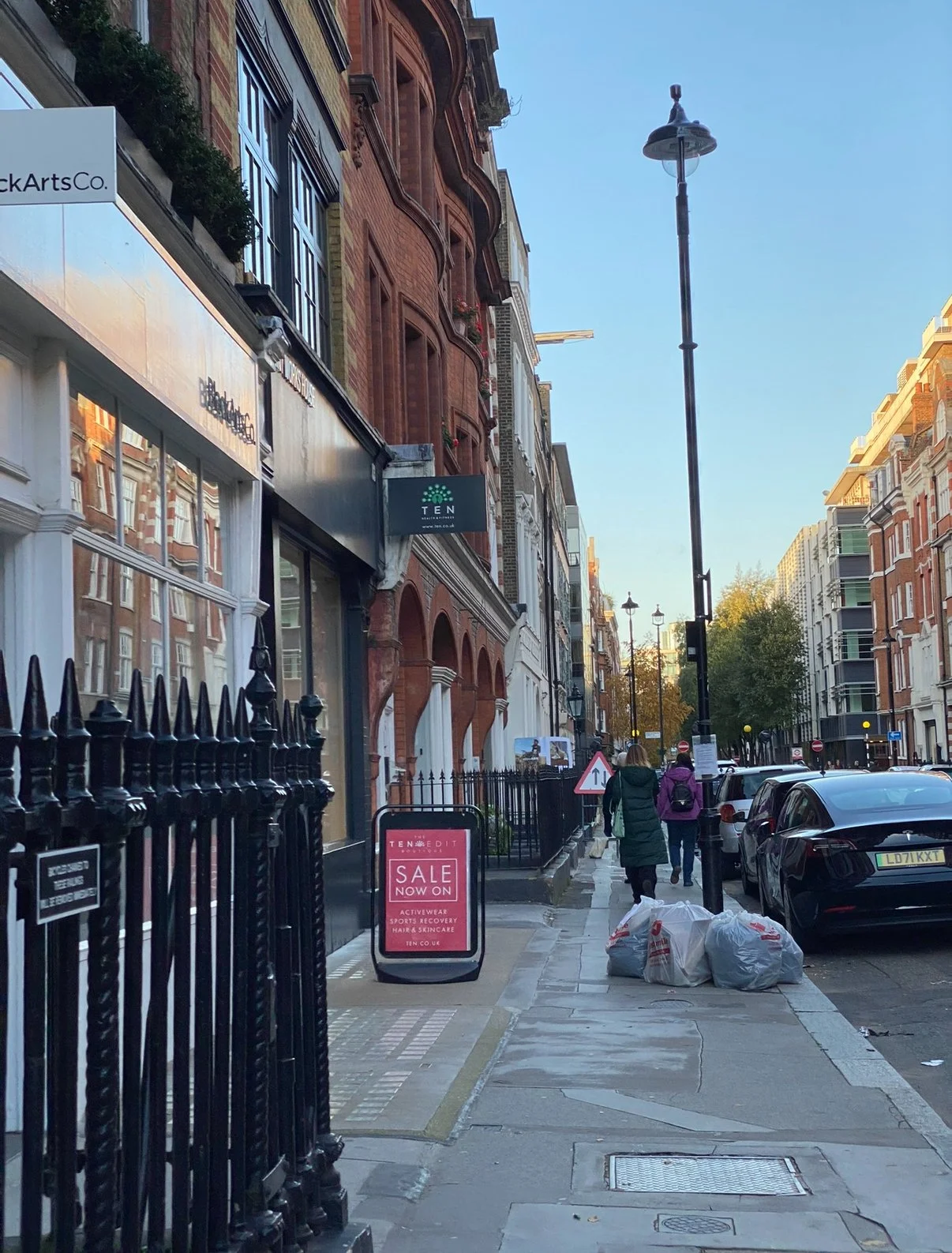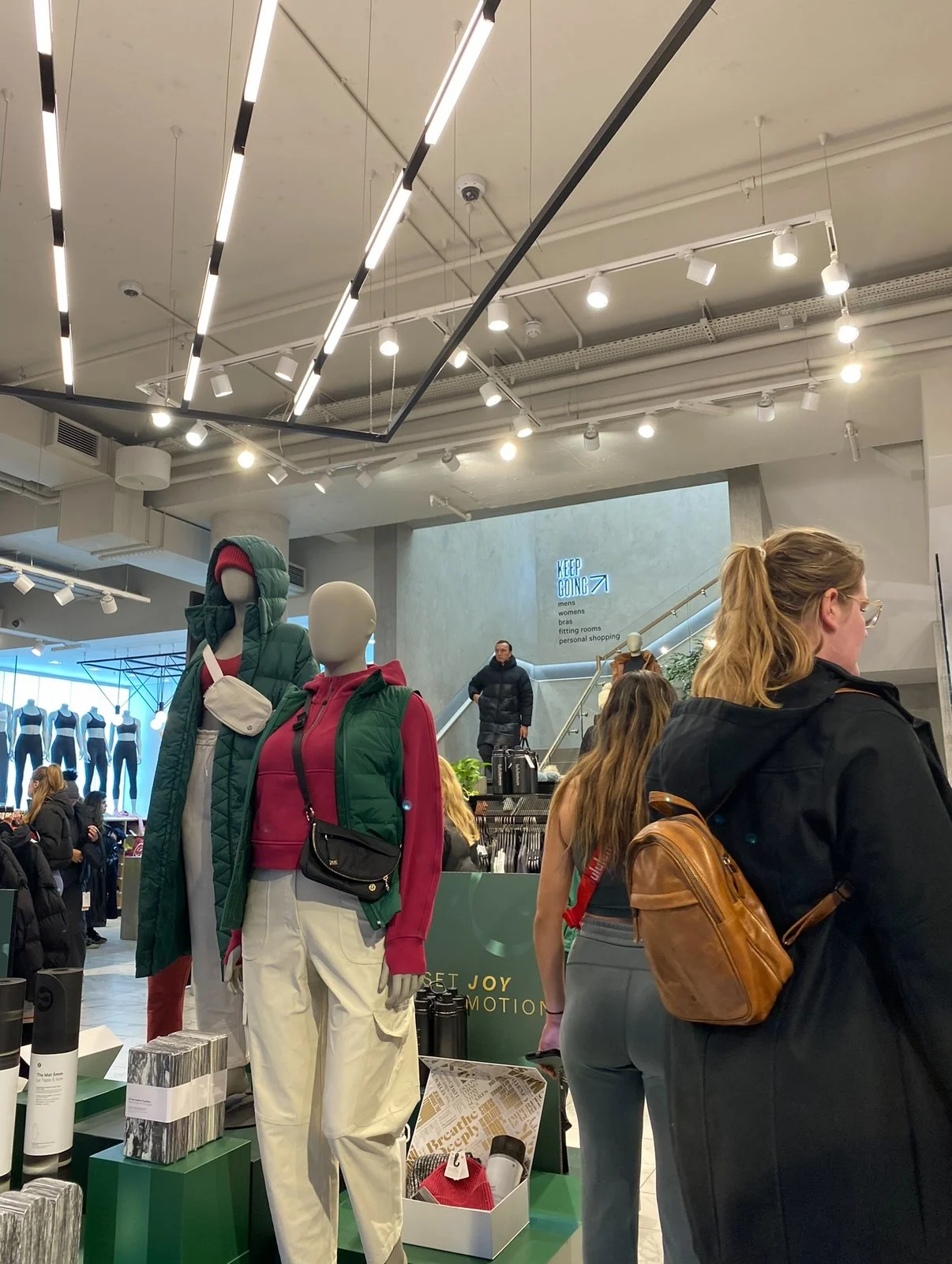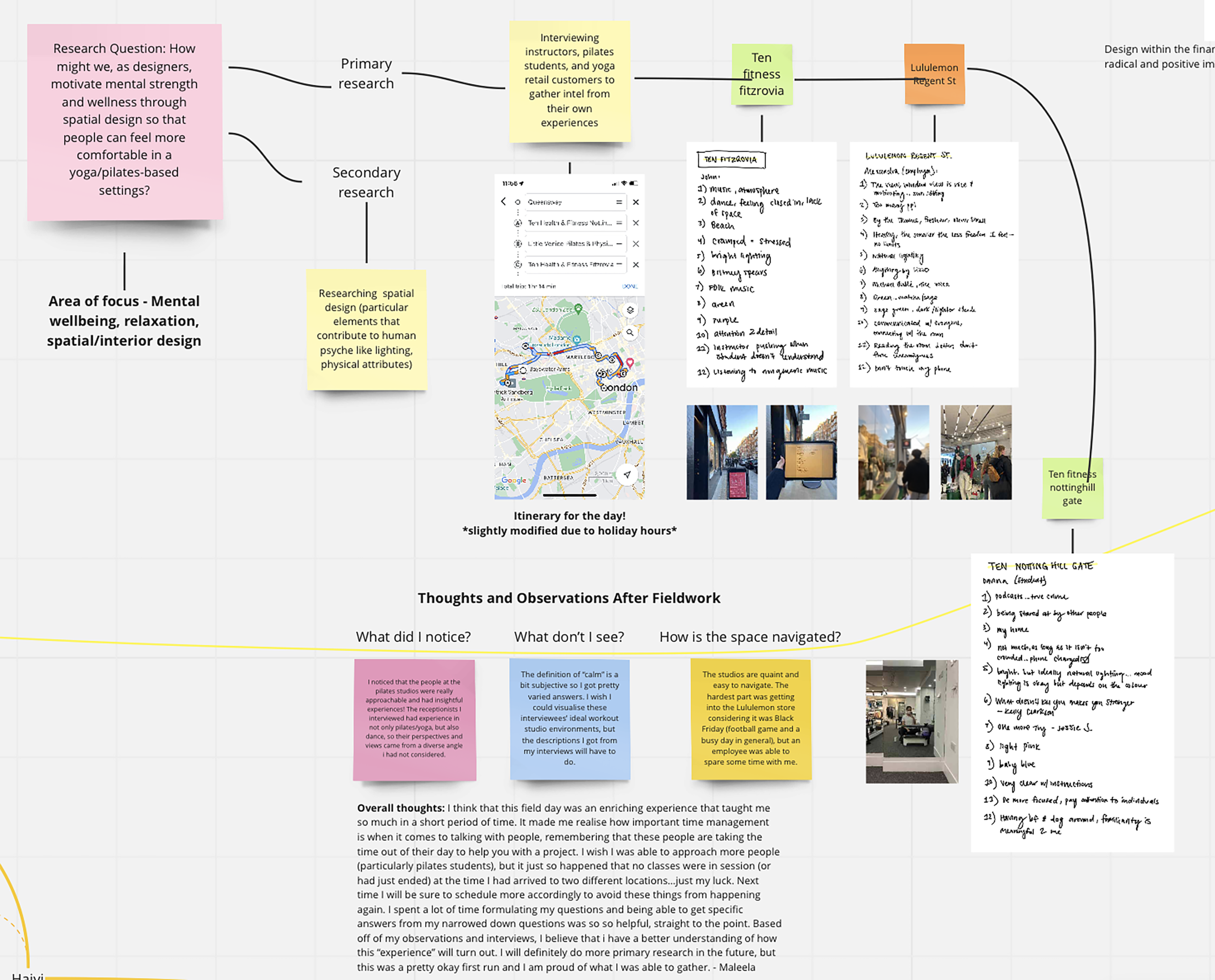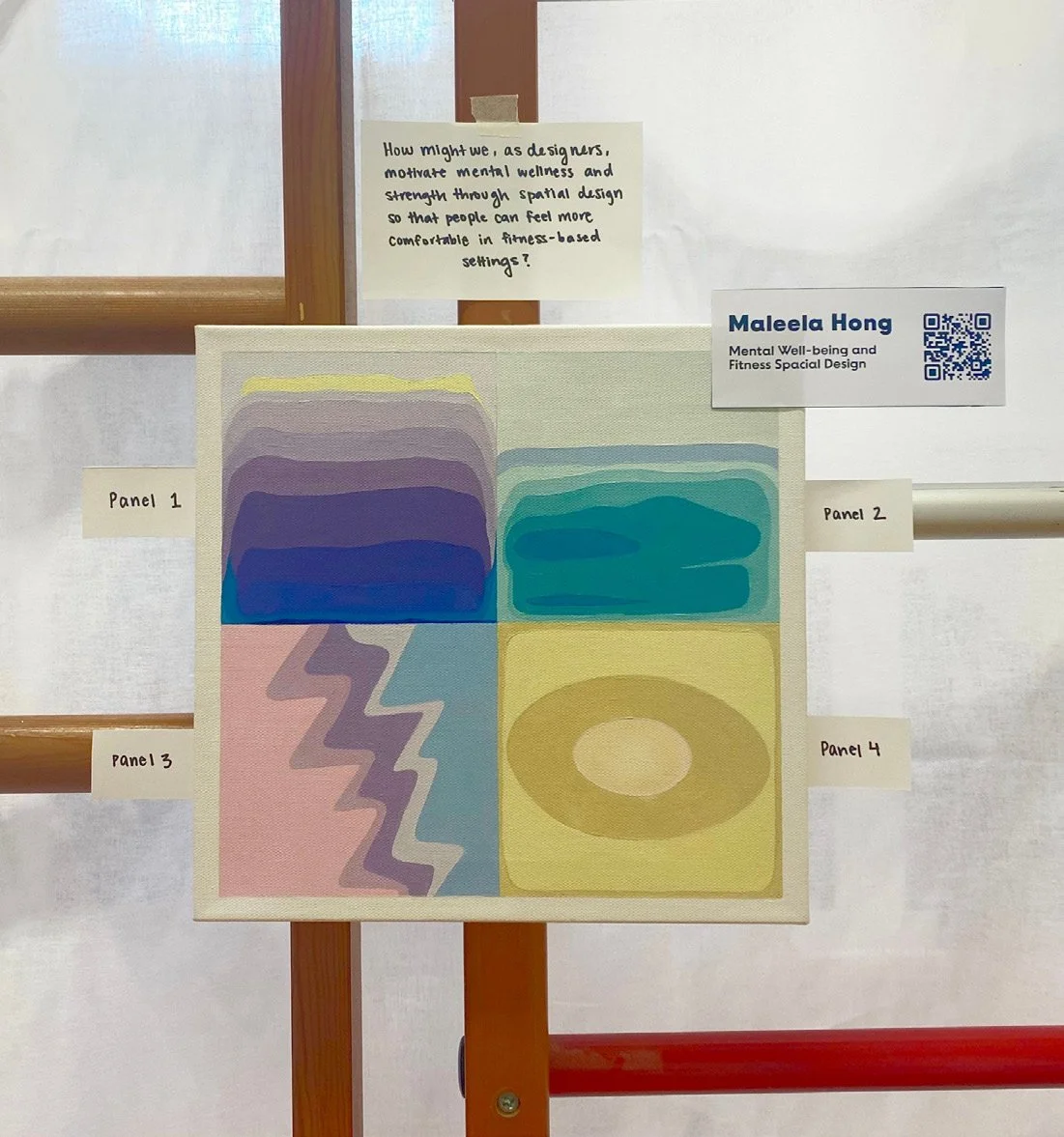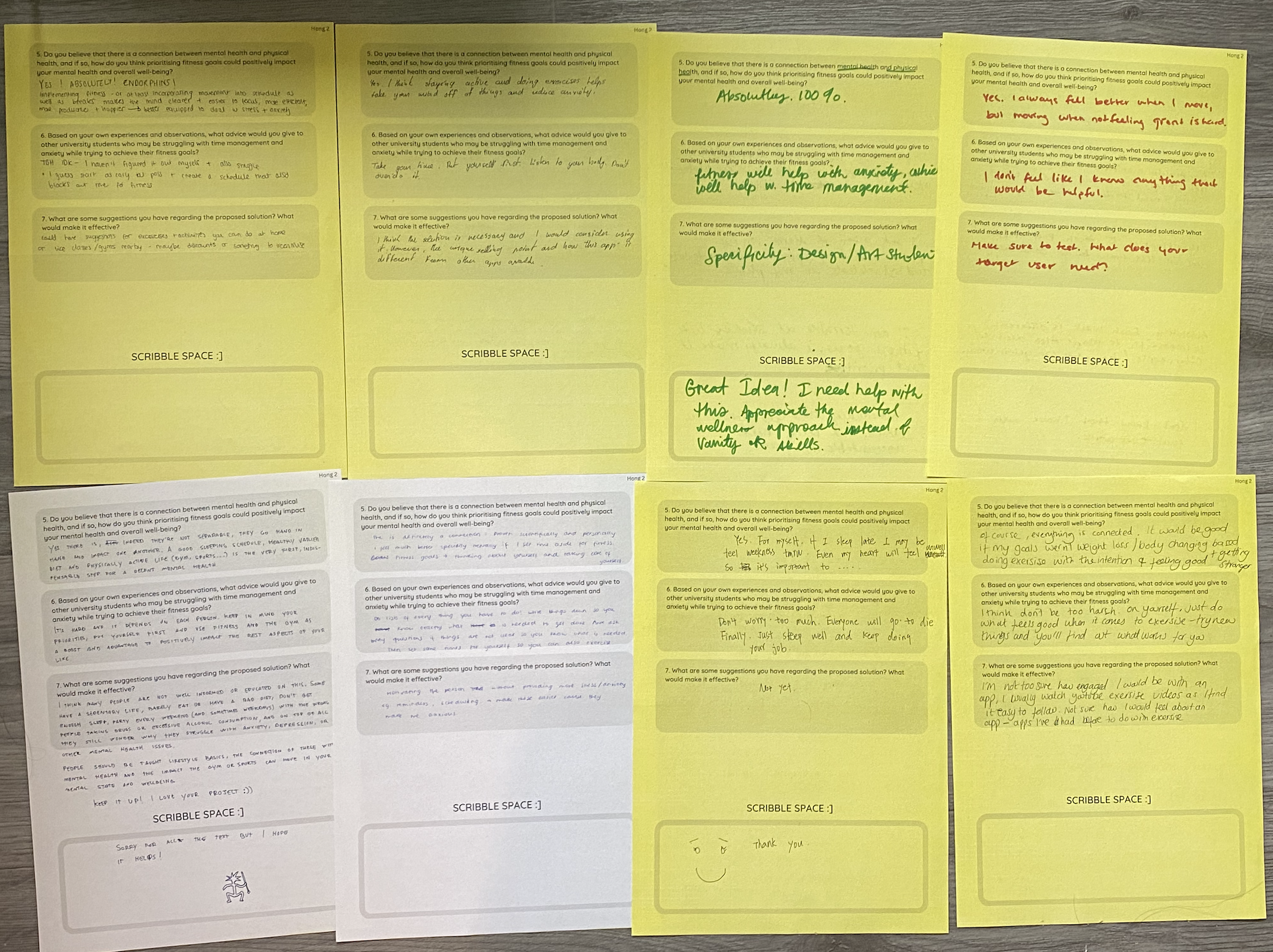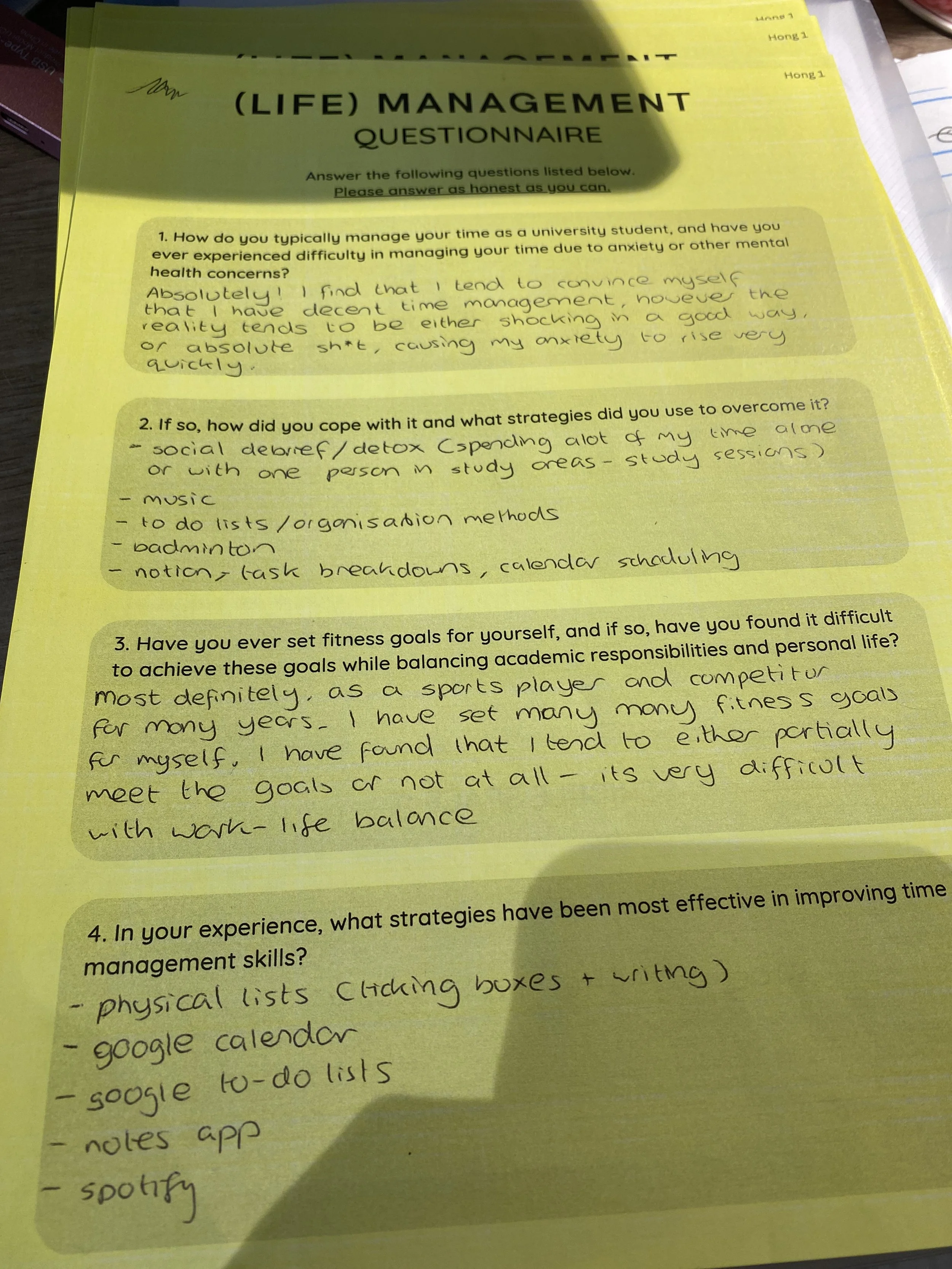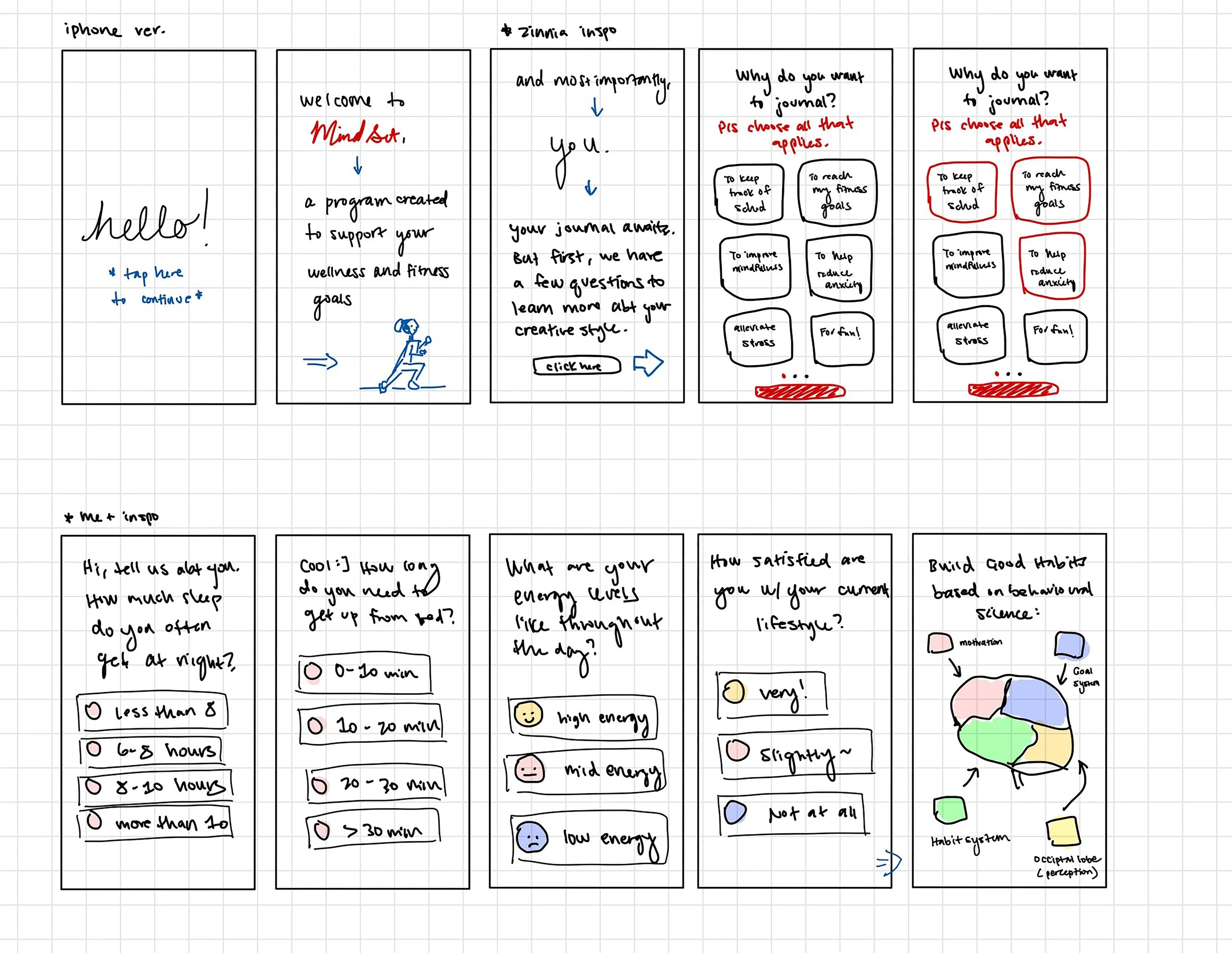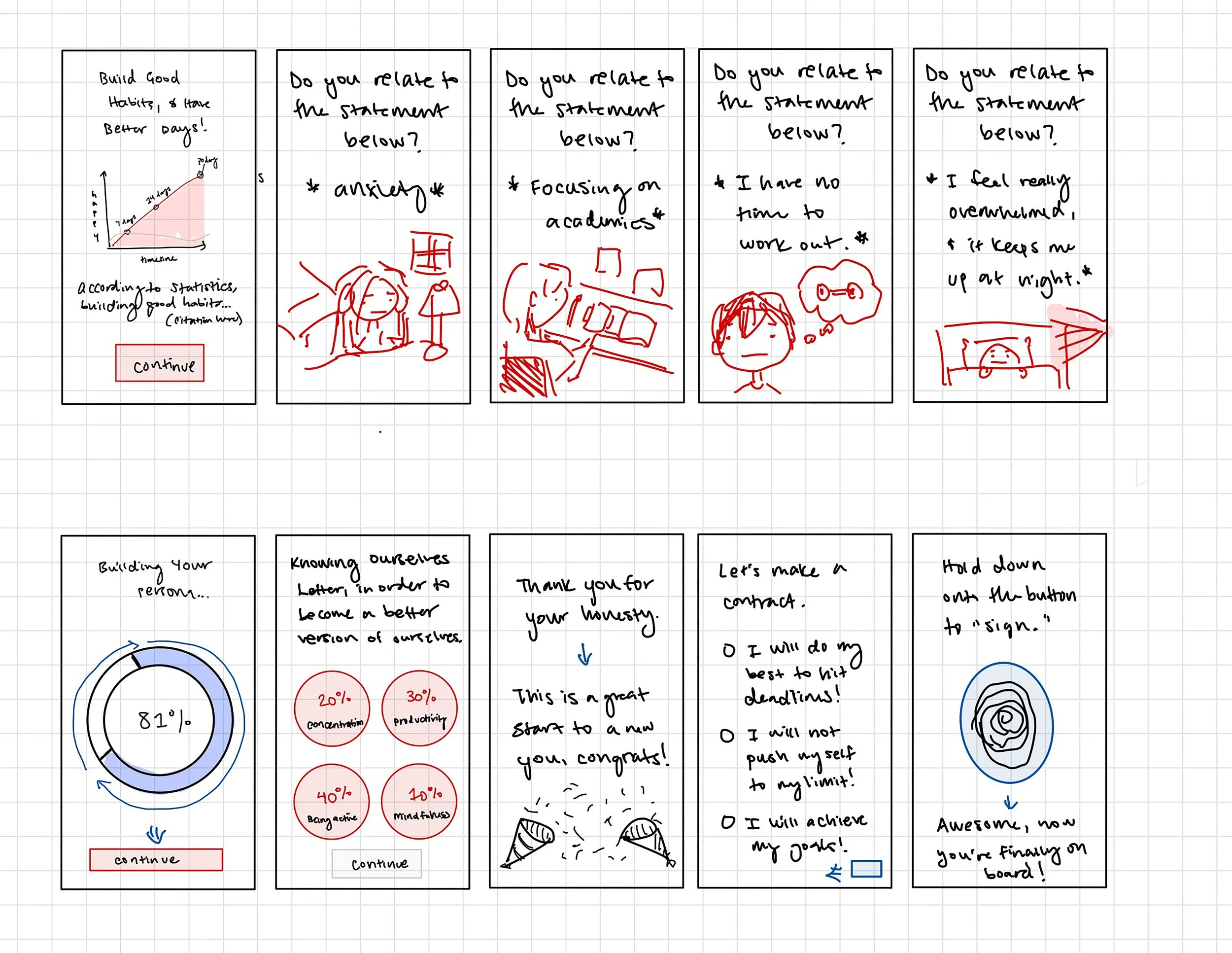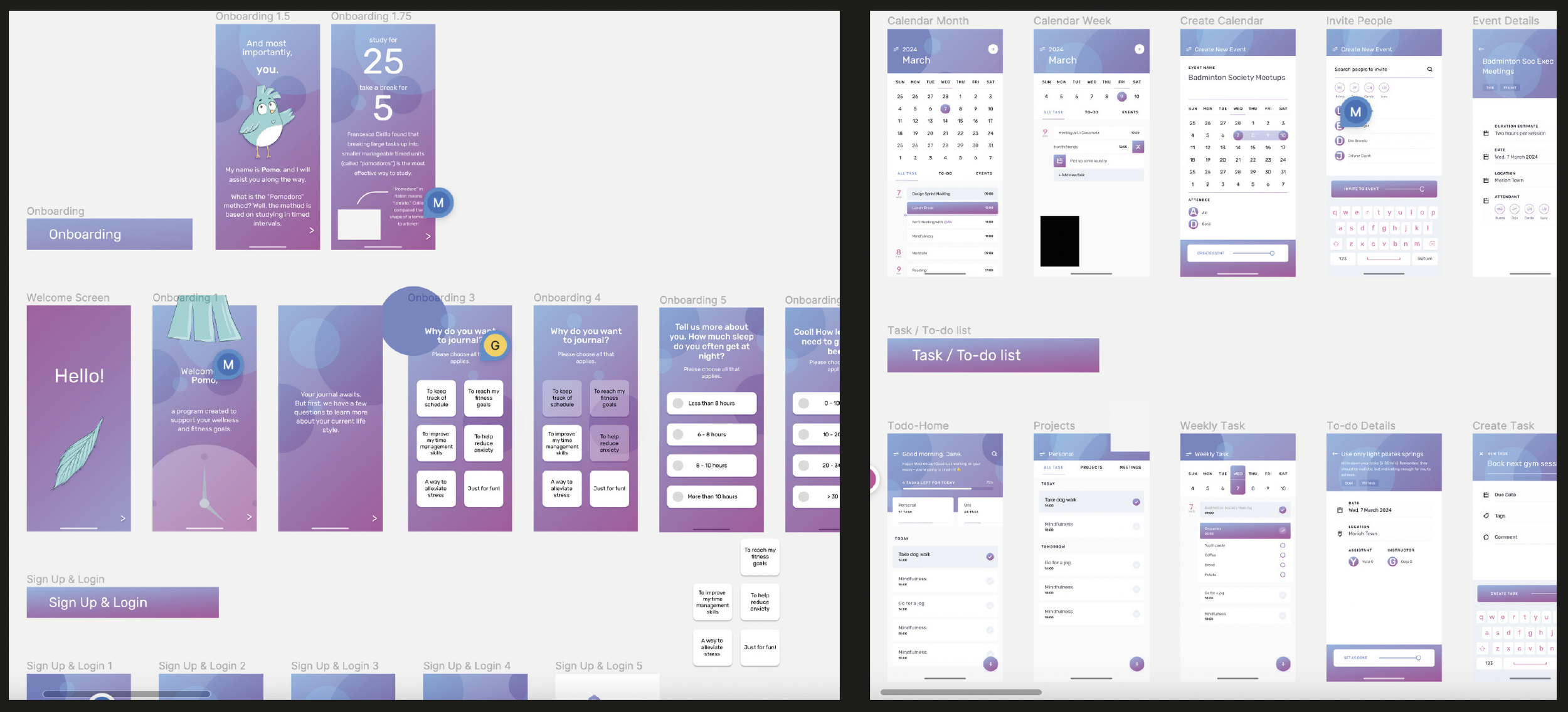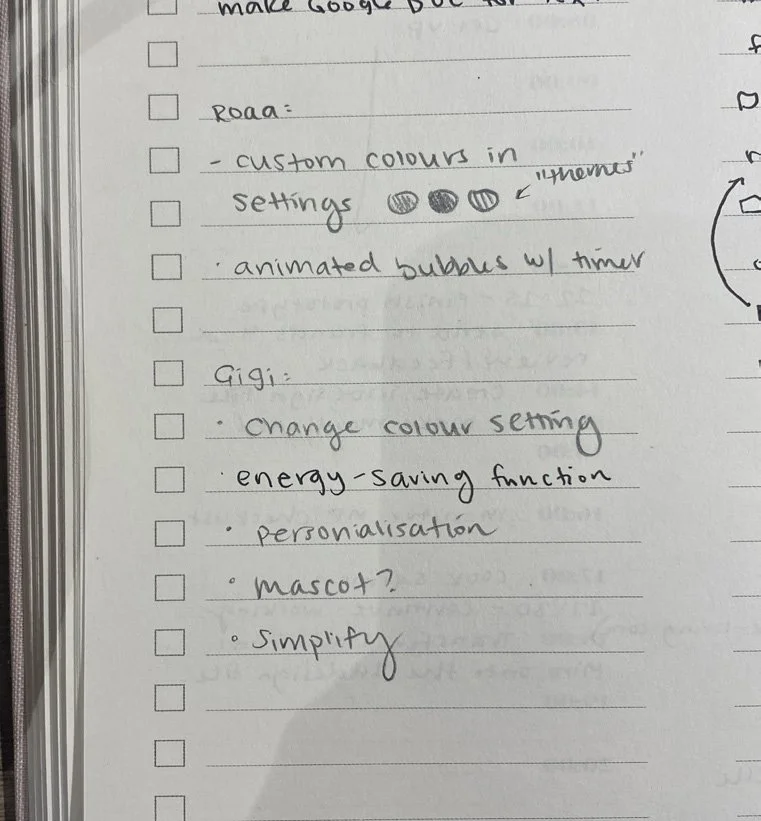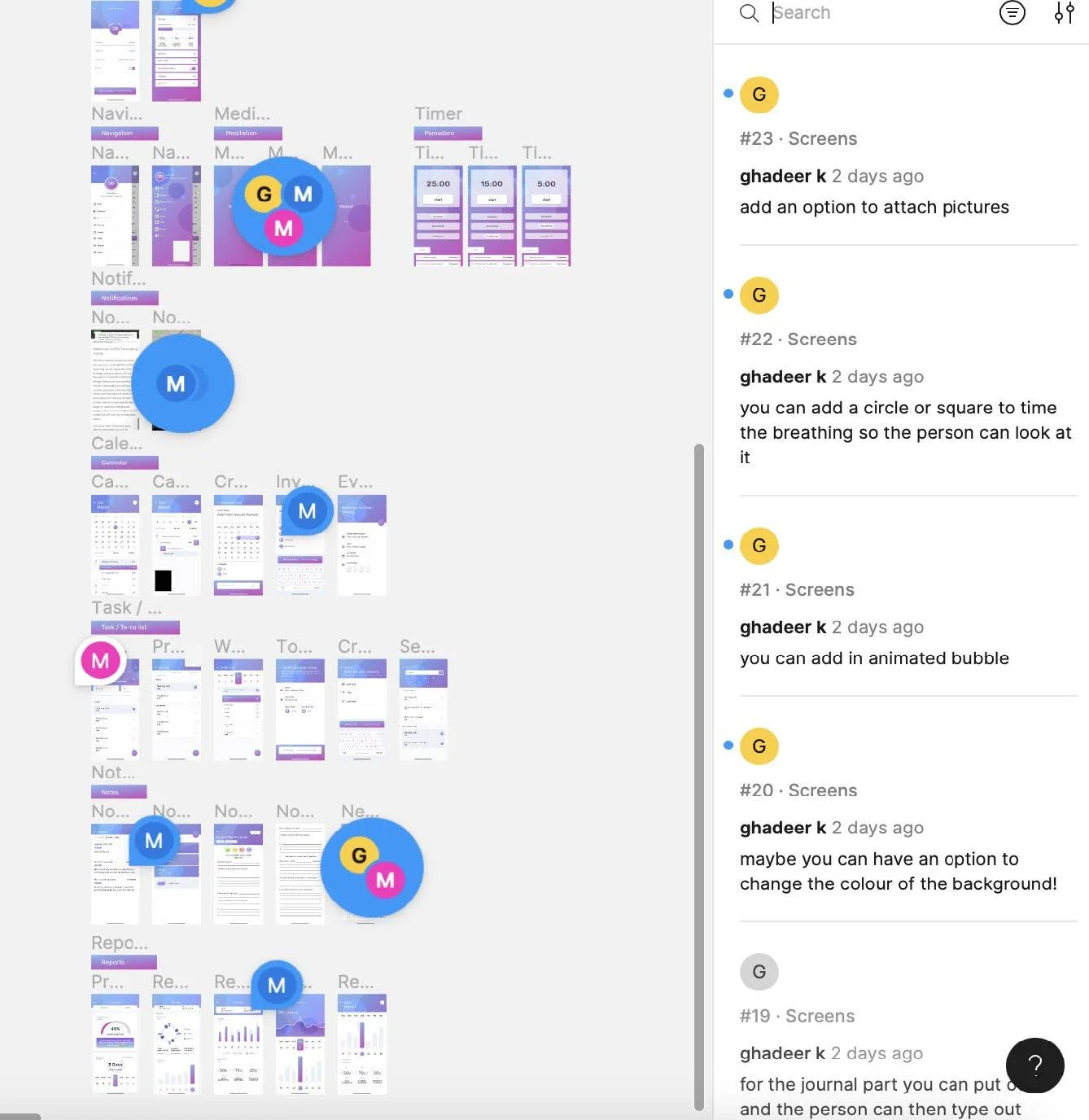POMO
See how I used UX/UI design to create an app that helps students stay on top of their time. ⏰
Client
Self-initiated project for academic purposes
Sector
Design and Technology — UX/UI design and digital product development.
My Role
Project Lead & UX/UI Designer — responsible for conceptualising, designing, and delivering an app prototype while documenting the entire creative process from idea to final deliverable.
Duration
September 2022 - April 2023
What is POMO?
Pomo is a free time management and goal-setting app designed to help anxious university students manage stress and achieve fitness and wellness goals. Inspired by the Pomodoro technique, it offers features like a timer, customisable schedule, meditation zone, and journal to support healthy daily habits.
As part of my Final Major Project for the BA (Hons) Design Management and Cultures program at UAL, we were tasked with creating our own briefs aligned with our future career goals. This project challenged me to consider the “bigger picture” of my chosen field and act as a bridge between university and professional practice.
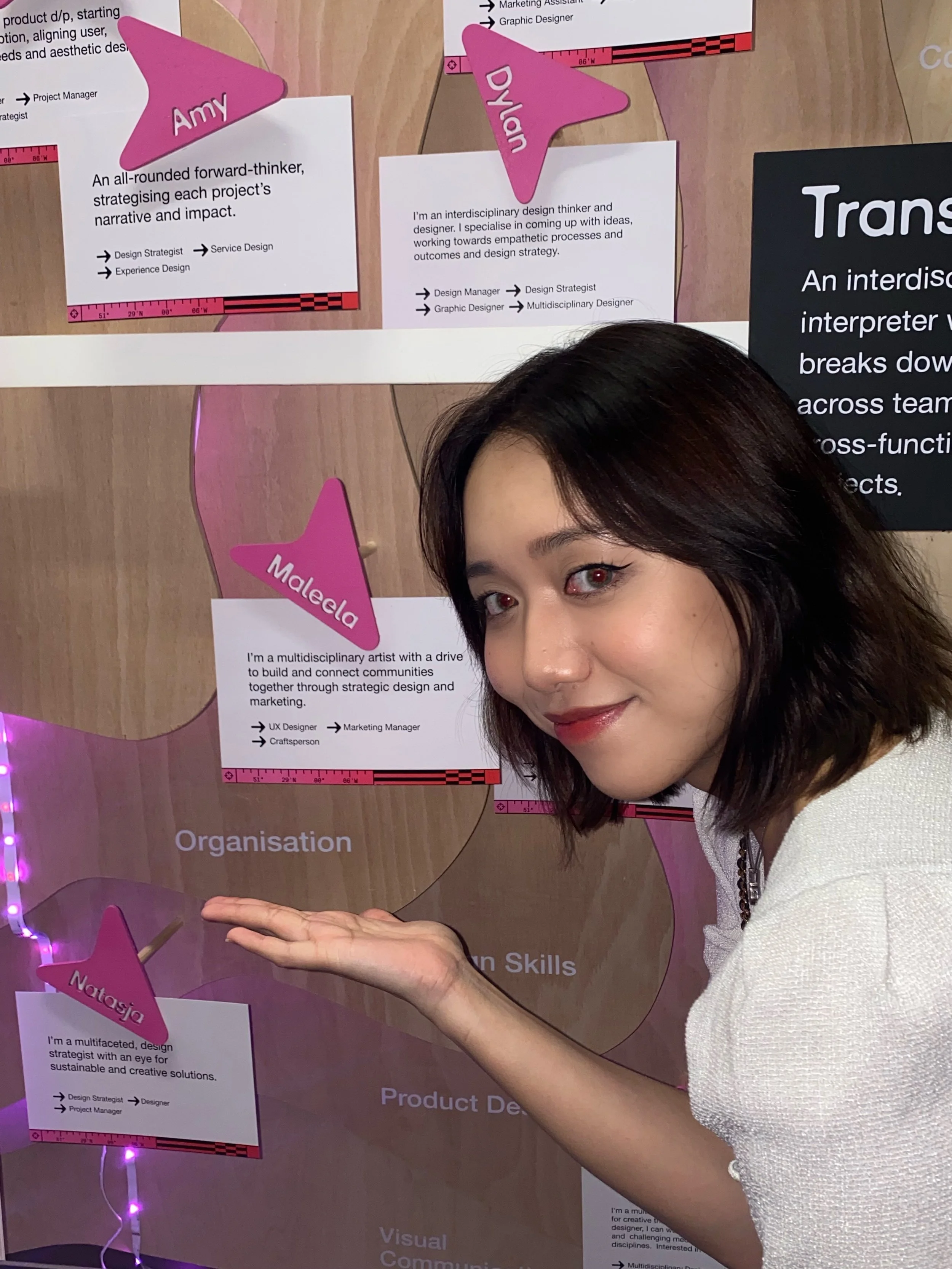
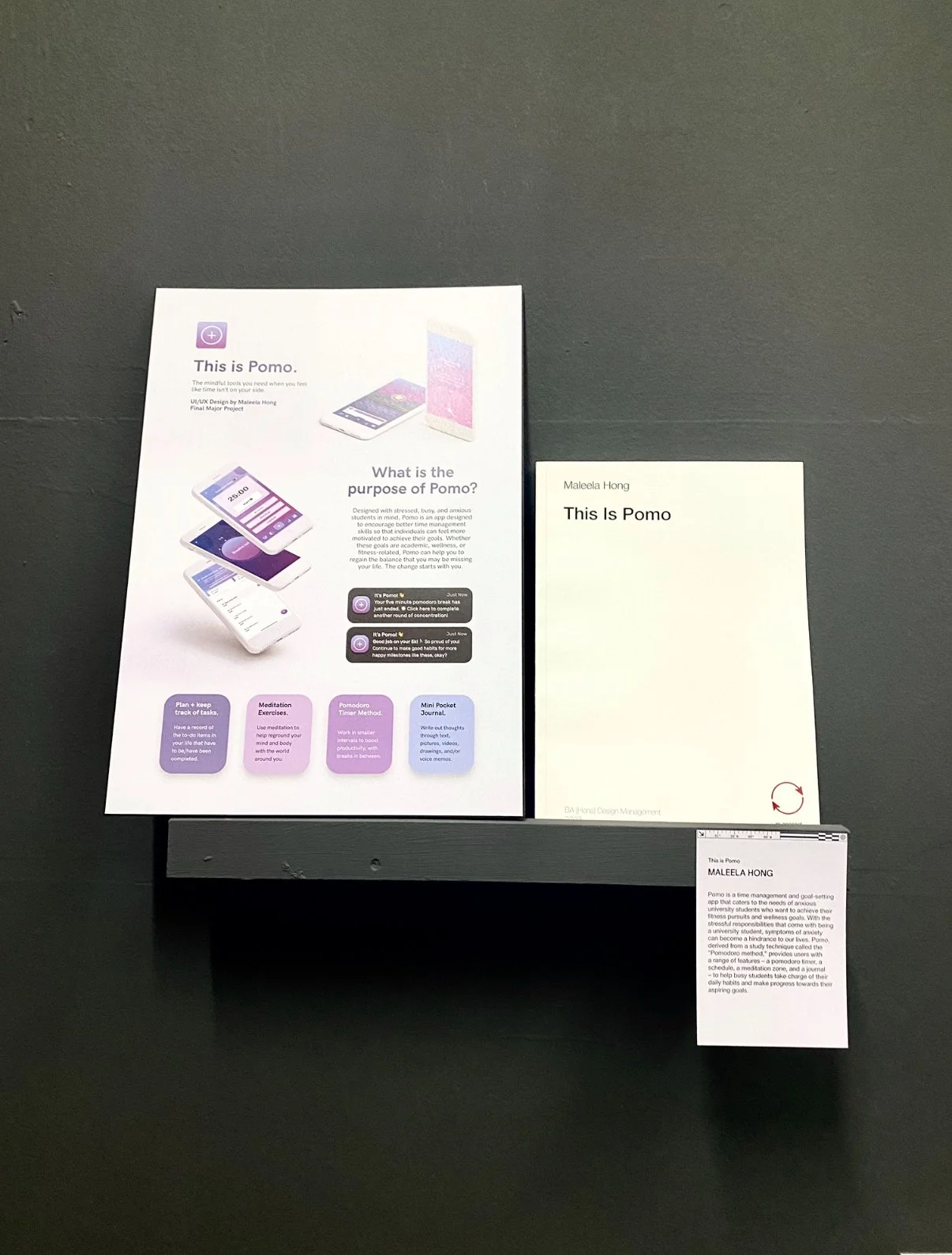
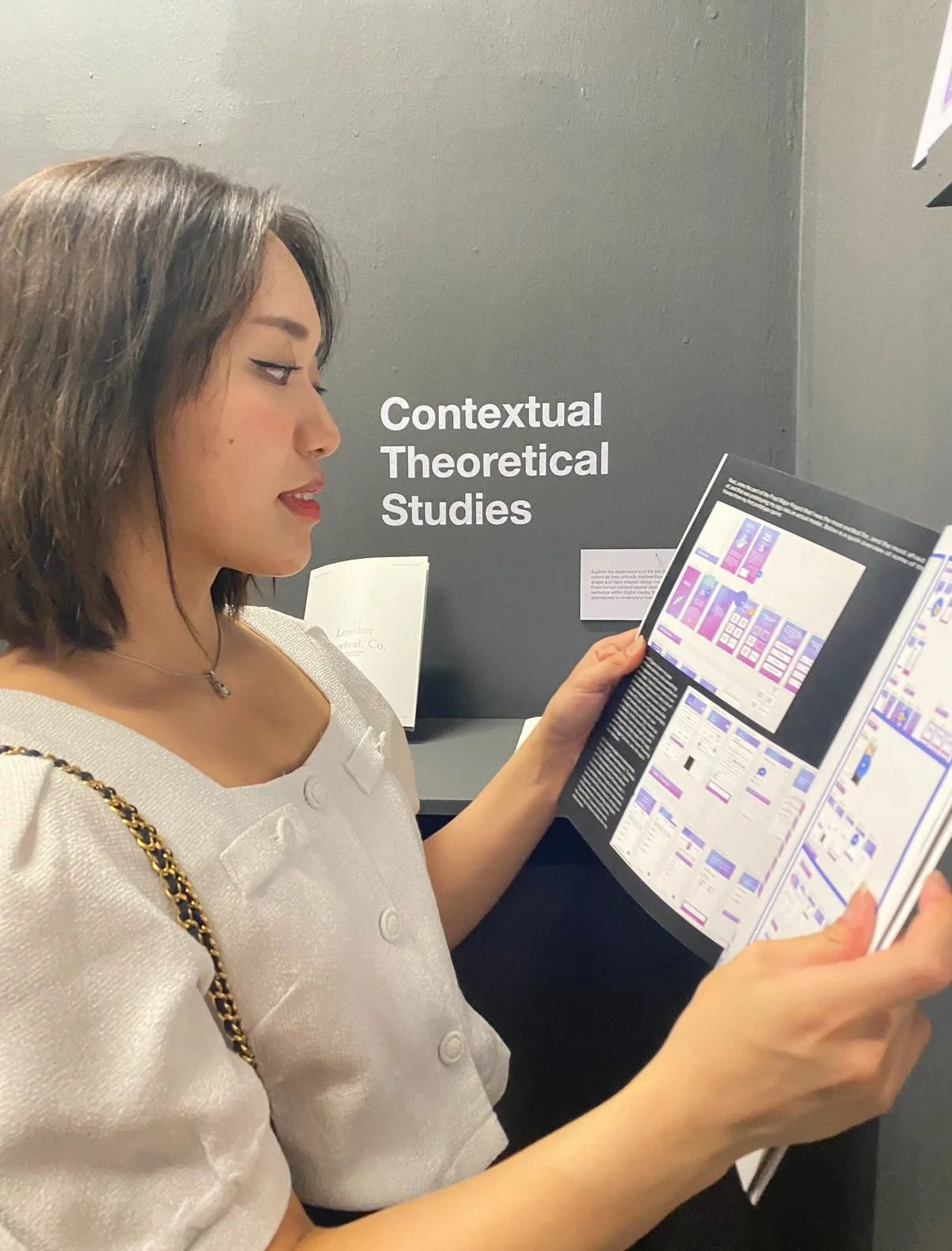
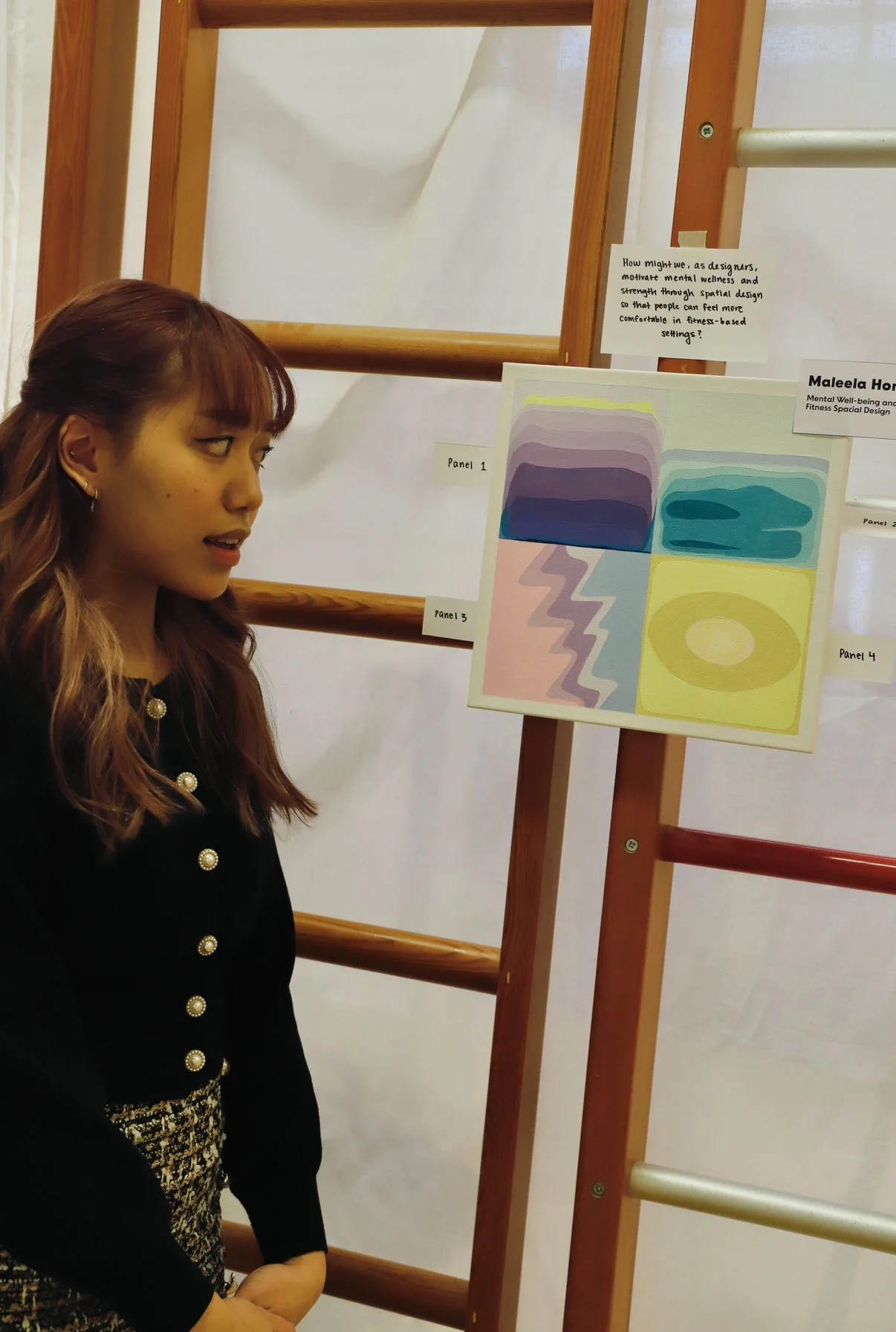
The Problem & Brief
As part of my Final Major Project for the BA (Hons) Design Management and Cultures program at UAL, we were tasked with creating our own briefs aligned with our future career goals. This project challenged me to consider the “bigger picture” of my chosen field and act as a bridge between university and professional practice.
With an emerging interest in fitness and mental health, I aimed towards solving a common issue in university students: time and anxiety management. University students often struggle to balance coursework, life and fitness — anxiety makes prioritising, starting and finishing tasks harder, which undermines wellbeing and consistency in fitness goals.
The final how might we statement I created was as follows:
How might we improve time management skills for anxious students so that they feel motivated to reach their fitness and wellness goals?
Below, I will bring you along through my process, showcasing the steps it took to define my brief and how I chose to address my overall project through design thinking.
The Process
I adopted the double diamond framework to guide me in the app’s development process.
My refined process was as follows:
Discover: Field day interviews (pilates instructors/students/retail staff), secondary literature on anxiety & the Pomodoro method, benchmarked competitors.
Define: Reframed problem into the final HMW after research, mind-mapping, and empathy work.
Develop: Wireframes, storyboards, branding experiments (purple + teal accent), mascot exploration, then moved into Figma prototyping.
Deliver: Usability sessions (two remote sessions with six peers total), iteration notes and final UI screens.
➡️ I used tools such as Google Docs and Notability for note taking, Miro for visual-planning and mind mapping, Goodnotes and Figma for prototyping. For the finished deliverable and process book, I used apps including Procreate, Adobe Photoshop, and Adobe InDesign.
Discover - Research
I used a balanced mix of primary and secondary research to understand how anxiety impacts university students’ time management, motivation, and wellbeing. This combination of qualitative and quantitative data created a strong, user-centred foundation for the project.
Primary research included surveys, interviews, and questionnaires, with participants kept anonymous to encourage open sharing on a sensitive topic.
Secondary research involved academic journals and studies examining the link between anxiety, time management, and decision-making, helping me avoid relying solely on personal experiences.
Primary Research
Primary research was crucial to this project as it provided first-hand, targeted insights from the intended user group—university students managing time, anxiety, and fitness goals. Through questionnaires, interviews, and observational exercises, I was able to capture lived experiences and nuanced perspectives that secondary sources could not provide. Primary research also allowed me to validate or challenge assumptions drawn from secondary research, ensuring that the app’s features were grounded in real user needs rather than theoretical models alone.
Before my field research day, I reflected on my initial question about using spatial design to improve mental wellness in fitness settings, which later shifted to focusing on time management for anxious students. My goal was to understand how design elements affect mood, especially anxiety.
I targeted Pilates instructors, students, and fitness brand employees, mainly at Ten Fitness and Lululemon in London. I used Notability and Miro to note down and organise my interviews. Questions focused on how colors, music, and lighting influence relaxation and motivation.
The research day (Nov 26) was tough due to Black Friday closures and busy London streets, forcing schedule changes. Interviewing strangers was intimidating, but prior practice with my peers helped a lot! I completed interviews with three people: a Pilates instructor, a student, and a Lululemon employee.Primary Research, cont.
After presenting my project’s progress through a visual ethnography, I additionally conducted a primary research exercise during a progress presentation to gather input from my target audience: university students. I created a “(Life) Management Questionnaire” with questions on time, anxiety, and fitness management.
Distributing it to peers and tutors during my presentation proved highly effective, as it generated immediate, relevant, and focused insights. I’m glad I chose to conduct the questionnaire in real time rather than afterward, as the responses directly informed my project’s direction.
I ended up using the primary research and insights I had collected from the field day to present my piece at the “Developing Meaning” showcase, a mini exhibition for the BA Design Management students to display their FMP works-in-progress.
My final ethnography drew on insights from my field day research into mental well-being and fitness spatial design. Using colours suggested by interviewees, I painted an artwork exploring how colour is linked to anesthesia and its potential to evoke a tranquil, peaceful atmosphere.With these new insights, I compiled the questionnaire responses (20 participants, all university students) into an empathy map on Miro for a visual reference.
These insights allowed me to focus my secondary research more precisely, ensuring that Pomo’s features addressed the identified issues.
Secondary Research
Secondary research was essential for this project as it provided the theoretical foundation and contextual understanding necessary to design Pomo effectively. Reviewing existing literature on time management, anxiety, and the relationship between mental and physical health enabled me to build on established knowledge rather than start from scratch. It also highlighted best practices from comparable wellness and productivity tools, revealing both successful strategies and gaps in current solutions.
In my benchmarking process, I looked into four existing apps on the market that tackle a similar agenda. I learned that:
Among simple design interfaces, existing apps tend to focus on one core area (meditation, habit tracking, or journaling).
With this, the opportunity I realised was that I could combine multiple wellness tools into one platform while keeping the interface calm, supportive, and personalisable.
Here is some more key information I found through educational articles & papers.
Anxiety and stress are among the top factors affecting student performance, often intensified by new life adjustments and lingering effects of the pandemic.
Six major risk factors contribute to student stress: psychological, academic, biological, lifestyle, social, and financial.
Poor time management can lead to academic burnout, reduced motivation, and disengagement.
External pressures from family or peers can increase anxiety and hinder personal goal achievement.
Self-efficacy — belief in one’s ability to complete tasks — is critical. Low self-efficacy leads to avoidance, while higher self-efficacy fosters motivation and action.
As someone who loves journalling, I decided to incorporate it into the app as a feature.This secondary research helped me to shape Pomo’s focus on tools that support structured time use, promote confidence, and reduce stress through accessible, non-intimidating features. I also discovered the effectiveness of a study method I commonly used growing up called the Pomodoro method, which influenced many of the app’s features.
The Pomodoro technique, visualised (Tucker Cummings, 2011).Define
After a lot of qualitative and quantitative research gathered, I came up with my final How Might We statement:
How might we improve time management skills for anxious students so that they feel motivated to reach their fitness and wellness goals?
Solution: A time management and goal-setting app that incorporates features to address anxiety and motivate students to achieve their wellness and fitness goals.
The app will provide its users with a range of features, such as a pomodoro timer, a customisable schedule, a meditation zone, and a journal, to help students take charge of their daily habits and make progress towards their aspiring goals in and out of school.
Design
Having done most of the primary and secondary research, I was now onto designing the solution. I first wrote out a list of objectives and key features that I wanted within the app, that way, I could read and see exactly what I needed to make come to life.
I brainstormed potential names I could use for the app, listed down app interface inspirations, and created a branding moodboard (I even considered making a mascot, a parrot named Pomo, but this idea was eventually dropped).
Develop - Wireframing
Through illustrated wireframes, I really wanted to relay a sense of comfortability between the app and its user. Rather than prodding the user with very deep questions, they are simple and quick to answer, and the user is able to ease their vulnerabilities through a set of guided questions, with markers in between some slides to add a boost of morale.
Overall, my idea was to create a straightforward, direct, and comfortable user experience and interface for the app.
Prototyping
Next, came the part of the FMP that I was the most excited about — that was prototyping my app into an actual model. Below is a quick overview of some of the frames from my first prototype sprint.
I used Figma to turn my app wireframe sketches into something that appeared and functioned like an actual app.
Testing
To gather constructive feedback, I used Figma’s collaborative tool and organised two video call sessions with a total of six peers. During each session, I guided them through the app’s features and wireframes while inviting real-time critique of my design choices.
Their input offered a fresh, unbiased perspective—something I felt was more valuable than feedback from classmates in Design Management who might share similar assumptions.
Figma’s commenting feature made it easy to compile their insights, though I also took handwritten notes when technical issues prevented some from accessing the tool.
Throughout the calls, participants were encouraged to ask questions at any point, allowing me to clarify design decisions and explain features as the app was still a work in progress.
After receiving feedback from my peers and my tutors, I decided to do some modifications. These included creating a personality/theme for the app, make it more dynamic, and make the app more personable through visuals.
Deliver - The Finished Project
Below are the final mock-ups for the Pomo app, designed in both Photoshop and Figma. These were proudly showcased at the UAL (London College of Communication) Graduate Show in 2023.
This project was a true culmination of my studies, bringing together every skill, insight, and creative approach I’d developed throughout the course, and applying them to a concept rooted in my own experience. It pushed me to experiment, problem-solve, and refine my process at every stage.
The journey was challenging, rewarding, and full of learning moments. I walked away not only with a finished product, but with a deeper understanding of my craft.
Please enjoy Pomo!

